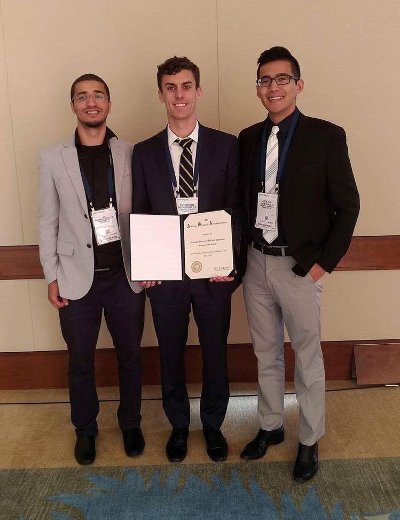 Virtual reality goggles were introduced to the consumer market in 2016, meaning that their alternate uses – aside from entertainment – have yet to be explored in-depth. This summer, Justin Yuan, the current president of the OUWB Anesthesiology Interest Group (AIG) and chair-elect of the American Society of Anesthesiologists Medical Student Component, participated in a research fellowship through the Foundation for Anesthesia Education and Research. He worked with pediatric anesthesiologists at the Lucile Packard Children's Hospital of the Stanford University Medical Center to test a fun alternative to using medication for alleviating children’s pre-operative anxieties by using virtual reality goggles.
Virtual reality goggles were introduced to the consumer market in 2016, meaning that their alternate uses – aside from entertainment – have yet to be explored in-depth. This summer, Justin Yuan, the current president of the OUWB Anesthesiology Interest Group (AIG) and chair-elect of the American Society of Anesthesiologists Medical Student Component, participated in a research fellowship through the Foundation for Anesthesia Education and Research. He worked with pediatric anesthesiologists at the Lucile Packard Children's Hospital of the Stanford University Medical Center to test a fun alternative to using medication for alleviating children’s pre-operative anxieties by using virtual reality goggles.
The Stanford Childhood Anxiety Reduction through Innovation and Technology (CHARIOT) Program spearheads the move to bring this growing technology, in addition to augmented reality, projector screens and tablets, onto the hospital floor. When pediatric patients are undergoing a stressful experience, whether it be a needle prick or a trip to the operating room, they’re allowed to pick their own distracting dose of fun.
On a tablet or bed-mounted projector screen, known as the Bedside Entertainment and Relaxation Theater, children have the option to watch the movie or video of their choosing; or, with the virtual reality goggles, children may select either an active or passive experience. Within the passive experience, a child may find him or herself transported to a relaxing atmosphere: for example, an underwater scene with fish and turtles swimming by. The active experience is more similar to playing a video game.
“Obviously for the blood draws (and similar procedures), we don’t want them moving their hands,” Yuan explains. “So, CHARIOT hired virtual reality game designers to create experiences catered toward our pediatric patients.” One such game entitled ‘Spaceburgers’ features burgers, fries and shakes flying toward the player against a relaxing outer space backdrop. “All you have to do to play the game is look at (the object), and, as if you were Cyclops from X-men, a laser-beam flies from your eyes and zaps it.” At the moment of the needle stick during these procedures, the health care provider may tap a controller and speed the game up by two times. “That increased cognitive load of everything flying twice as fast serves to distract the kid a little bit extra during what is considered to be the most stressful part of the experience,” Yuan says.
In order to determine whether or not the experience has quelled the anxiety of the patient, the health care providers used validated surveys featuring a series of standardized questions. Some questions were for Yuan, who observed the patient’s behavior, some were for the parents of the patient, who rated their satisfaction, and some were for the patient, regarding satisfaction, fear, anxiety, pain and more. Though the results are still preliminary, Yuan received many glowing testimonials from both patients and families.
National student chapter award winners for 2016-2017
Yuan’s long-held interest in anesthesiology motivated him to partake in both this research fellowship at Stanford and opportunities on OUWB’s campus. Hearing Dr. Kathy Schlecht speak at OUWB’s AIG introductory meeting last year inspired him to join and run for a position. “It aligned with my own vision of my future – what I wanted to do with my time and my hands,” he says.
The group leads several interactive events each year, including a simulation lab where students are introduced to anesthesia technical skills and a presentation from a malpractice lawyer, intended to teach students more about the legal sphere of medicine. “When people think about going into anesthesiology, one of the first things that comes to mind is they’re going to get sued, right? That it’s the specialty where you get sued.” The AIG’s goal is to help dispel these popular misconceptions. In October, the AIG at OUWB won a national award presented by the American Society of Anesthesiologists: The Outstanding AIG Student Chapter Award.
An MIT graduate, Yuan appreciates the unique melding of medicine and technology. “Every specialty has a use for technology in its field, whether it's electronic medical records, surgical robots, or even virtual reality, something previously thought to be primarily relegated to consumer entertainment,” he says. “We should be eager to see how these technologies can make us better, more efficient and effective doctors.”
Photo of person in uniform
Office of the Dean
O'Dowd Hall, Room 428
586 Pioneer Drive
Rochester, MI 48309
586 Pioneer Drive
Rochester, MI 48309

